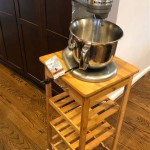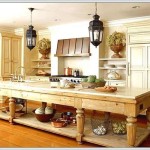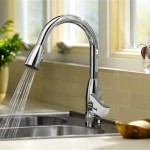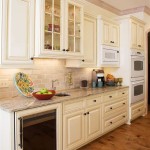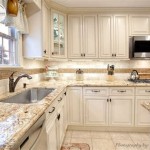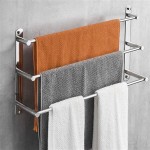Wall Mounted Kitchen Exhaust Fans: A Comprehensive Guide
Wall mounted kitchen exhaust fans are a crucial component of any modern kitchen, serving to remove smoke, grease, odors, and excess heat generated during cooking. These fans, also known as range hoods or cooker hoods, improve indoor air quality, prevent grease buildup on surfaces, and contribute to a more comfortable cooking environment. Understanding the different types, features, installation requirements, and maintenance procedures associated with wall mounted kitchen exhaust fans is essential for making an informed purchasing decision and ensuring optimal performance.
This article aims to provide a comprehensive overview of wall mounted kitchen exhaust fans, covering various aspects from their functionality and benefits to the factors influencing their selection and proper utilization. The information presented is intended for homeowners, kitchen designers, contractors, and anyone seeking to enhance their understanding of these essential kitchen appliances.
Understanding the Primary Functions and Benefits
The primary function of a wall mounted kitchen exhaust fan is to extract air contaminants produced during cooking. This includes smoke from burning food, steam from boiling liquids, grease particles released during frying, and volatile organic compounds (VOCs) emitted from various cooking processes. Without adequate ventilation, these contaminants can accumulate in the kitchen, leading to several problems, including reduced air quality, unpleasant odors lingering in the house, and the formation of sticky grease deposits on walls, cabinets, and other surfaces.
By effectively removing these air pollutants, wall mounted kitchen exhaust fans offer several significant benefits. Firstly, they improve indoor air quality, which is crucial for the health and well-being of occupants. Chronic exposure to cooking fumes can exacerbate respiratory problems, such as asthma and allergies, and may even contribute to more serious health issues over time. Secondly, these fans help to maintain a cleaner and more hygienic kitchen environment. By capturing grease particles before they settle on surfaces, they prevent the buildup of sticky residues that are difficult to clean and can attract pests. Thirdly, they contribute to a more comfortable cooking experience by removing excess heat and humidity, making the kitchen a more pleasant space to work in.
Furthermore, some wall mounted kitchen exhaust fans are equipped with features that enhance their functionality and usability. For example, many models include integrated lighting to illuminate the cooking surface, providing better visibility while preparing food. Some fans also offer variable speed settings, allowing users to adjust the extraction rate according to the specific cooking activity. Additionally, certain models incorporate advanced filtration systems that effectively remove odors and particulate matter from the air, further improving indoor air quality.
Key Considerations for Selecting the Right Wall Mounted Kitchen Exhaust Fan
Choosing the right wall mounted kitchen exhaust fan involves considering various factors to ensure that the selected model meets the specific needs of the kitchen and the preferences of the user. Some of the most important considerations include the size of the cooking surface, the type of cooking performed, the desired aesthetic, and the available budget.
The size of the cooking surface is a critical factor in determining the appropriate size and extraction capacity of the exhaust fan. As a general rule, the width of the exhaust fan should be equal to or greater than the width of the cooktop. This ensures that the fan can effectively capture smoke and contaminants rising from all parts of the cooking surface. The extraction capacity, measured in cubic feet per minute (CFM), indicates the volume of air that the fan can move in a minute. A higher CFM rating is generally required for larger kitchens and for cooking styles that produce a significant amount of smoke and grease, such as stir-frying or deep-frying. A common recommendation is at least 100 CFM per linear foot of cooktop. For instance, a 30-inch cooktop would require at least 250 CFM.
The type of cooking performed also influences the choice of exhaust fan. If the user frequently engages in cooking activities that generate a large amount of smoke, grease, or odors, such as grilling or frying, a more powerful exhaust fan with a robust filtration system is necessary. Conversely, if the user primarily prepares simple meals that produce minimal fumes, a less powerful and less expensive exhaust fan may suffice.
Aesthetic considerations are also important, as the exhaust fan is a prominent feature in the kitchen. Wall mounted kitchen exhaust fans are available in a wide range of styles, finishes, and designs to complement different kitchen decor schemes. Some popular styles include stainless steel hoods, which offer a sleek and modern look, and traditional hoods with decorative accents. The chosen finish should match or complement the other appliances and fixtures in the kitchen. Furthermore, the noise level of the exhaust fan should be considered, especially if the kitchen is located near living areas. Look for models with a low sones rating, which indicates the perceived loudness of the fan.
Budget constraints will inevitably influence the selection process. Wall mounted kitchen exhaust fans range in price from a few hundred dollars to several thousand dollars, depending on the brand, features, and extraction capacity. It is important to establish a budget early on and to prioritize the features that are most important to the user. While it may be tempting to opt for the cheapest option, it is generally advisable to invest in a model that offers adequate performance and durability to ensure long-term satisfaction.
Installation and Maintenance Best Practices
Proper installation and regular maintenance are essential for ensuring the optimal performance and longevity of a wall mounted kitchen exhaust fan. The installation process typically involves mounting the fan to the wall above the cooktop, connecting it to a duct system that vents the exhaust air outside, and wiring it to the electrical system. It is generally recommended to hire a qualified professional to perform the installation, as improper installation can result in safety hazards, such as electrical shorts or gas leaks, and can also void the warranty.
Before installation, it is important to ensure that the wall is strong enough to support the weight of the exhaust fan. If the wall is not sturdy enough, it may be necessary to reinforce it with additional framing. The ductwork should be properly sized and sealed to prevent air leaks and to ensure efficient extraction. The exhaust vent should be located away from windows, doors, and other air intakes to prevent the recirculation of contaminated air.
Regular maintenance is crucial for maintaining the performance and efficiency of the exhaust fan. The most important maintenance task is cleaning the filters, which trap grease and other contaminants. The frequency of cleaning depends on the type of cooking performed and the frequency of use, but it is generally recommended to clean the filters at least once a month. Some filters are dishwasher-safe, while others may need to be cleaned by hand with soap and water. Replacing the filters periodically is also necessary to maintain optimal performance.
In addition to cleaning the filters, it is also important to clean the exterior of the exhaust fan regularly to remove grease and dirt. A damp cloth and mild detergent can be used to clean the surfaces. Avoid using abrasive cleaners or scouring pads, as these can damage the finish. The fan blades should also be cleaned periodically to remove dust and debris. This can be done with a soft brush or a vacuum cleaner with a brush attachment.
Furthermore, it is important to inspect the ductwork regularly for any signs of damage or leaks. If any problems are detected, they should be repaired promptly to prevent air leaks and to maintain efficient extraction. The motor of the exhaust fan should also be inspected periodically to ensure that it is running smoothly. If the motor is making unusual noises or is not operating properly, it may need to be repaired or replaced.
By following these installation and maintenance best practices, homeowners can ensure that their wall mounted kitchen exhaust fans provide optimal performance, improve indoor air quality, and contribute to a cleaner and more comfortable kitchen environment for years to come.

6 Inch Wall Mounted Exhaust Fan For Kitchen At 1000 Piece In Chennai Id 25236782912

Electricity Wall Mount 4inch Black Kitchen Exhaust Fan At 450 In Ludhiana

Abc123 Wall Mount 18in Kitchen Exhaust Blower Fan Stainless Steel Blades 1hp 220v 60hz

Wall Mount 9 Inch Iron Black Exhaust Fan For Kitchen 1350 Rpm At 1250 In Ahmedabad

Wall Mounted 100w 2800rpm Sprcial Air Baffle Strong Wind Ventilation Pure Copper Motor Kitchen Exhaust Fan

6 8 10 12 Inch Commercial Shop Kitchen Garage Wall Exhaust Ventilation Fans Futina

Wall Mounted Kitchen Extractor Fan With Ventilation Ubuy

220v Light Weight Ac Warehouse Kitchen Metal Wall Mounted Electric Exhaust Fan

6 8 10 12 Inch Commercial Shop Kitchen Garage Wall Exhaust Ventilation Fans Futina

7 Inch Low Noise Exhaust Fan For Home Bathroom And Ubuy

